 |
|
|
Black
eeltail catfish
Plotosus canius
Family Plotosidae
updated Oct 2019
if you
learn only 3 things about it ...
 It is small and usually hidden among seaweeds or under
rubbish. Watch your step! It is small and usually hidden among seaweeds or under
rubbish. Watch your step!
 The 'whiskers' don't sting. They are used to find food
in murky waters. The 'whiskers' don't sting. They are used to find food
in murky waters.
 It
has venomous spines. Don't touch it! It
has venomous spines. Don't touch it! |
|
Where
seen? These wriggly place eel-like fishes are sometimes seen on some of
our shore. Usually seen alone, hiding in pools under stones or other
debris on the shore, near seagrasses. Elsewhere, adults found mostly
in estuaries and lagoons, and sometimes up rivers in nearly fresh
waters.
Features: Adults can reach 90cm-1.5m long, those seen at
low tide on our shores usually much smaller, about 4-5cm long. Body
long, cylindrical and flattening into an eel-like tail. i.e., the dorsal and anal fins are continuous
with the tail fin. Snout blunt with four pairs of 'whiskers' (called barbels)
all around the mouth. One pair on the snout in front of the eyes,
one pair on each side of the mouth and two pairs below the mouth.
It lack scales and has a smooth slimy skin. It makes up for this 'nakedness'
with venomous spines on the dorsal fin and on each of the pectoral
fins. These tough spines can be locked upright, thus making an eeltail
catfish unpleasant for bigger fish to swallow. Plain dusky-brown
to black with a black dorsal fin tip and a pale belly. Tiny ones resemble black tadpoles.
Sometimes confused with Striped
eeltail catfishes. The adults of these
two eeltail catfishes may appear similar as the stripes on the Striped
eeltail catfish fades with age. In Black eeltail catfish adults, the
long barbels at the top of the snout can extend past the eyes. These
barbels don't extend past the eyes in adult Striped eeltail catfishes. So far, those tiny juveniles seen schooling in dense balls on our shores turn out to be Striped eeltail catfishes.
Sometimes mistaken for sea
snakes or eels (Family
Muraenidae). Here's more on how
to tell apart sea snakes, eels and eel-like animals. |
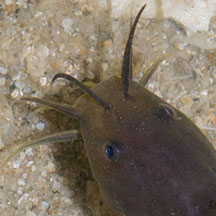
'Whiskers'
(barbels) at the top of the snout
can extend past the eyes. |
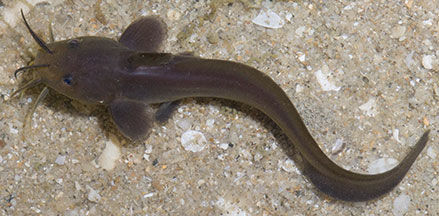 Changi, Aug 05
Changi, Aug 05 |
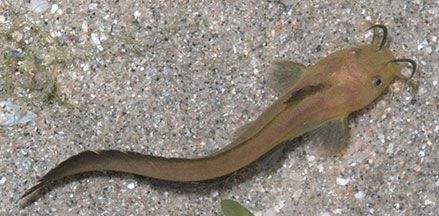
Body may not be black,
but tip of dorsal fin always black.
Changi, Apr 08
|
|
| Don't touch! It has venomous spines on the dorsal fin and on each of the pectoral
fins, which can be locked upright. The stings can be excruciating
and long-lasting. Like other wild animals, the fish will sting only if provoked. So don't touch it, don't put your hand into holes or crevices. |
|
What does it eat? It eats crustaceans,
molluscs and fishes. It is adapted for hunting
on the sea bottom in murky waters.The 'whiskers' (barbels) around the mouth
do not sting, they help find prey where visibility is poor. The barbels have taste buds
to help sense food. The fish
also has a keen sense of hearing. Also a strong sense of smell, using their 'noses' (nostril-like openings
on the snout).
Human uses: The large adults are
harvested commercially for eating. |
| Black
eeltail catfishes on Singapore shores |
| Other sightings on Singapore shores |
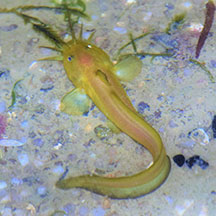
Changi, Sep 18
Photo shared by Dayna Cheah on facebook. |
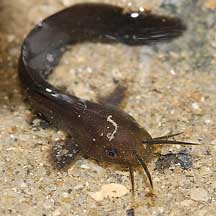
Tanah Merah, Sep 09
Photo shared by James Koh on his
blog. |
|
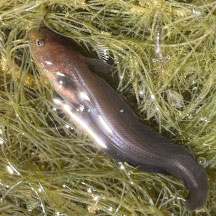
East Coast (B), Nov 25
Photo shared by Kelvin Yong on facebook. |
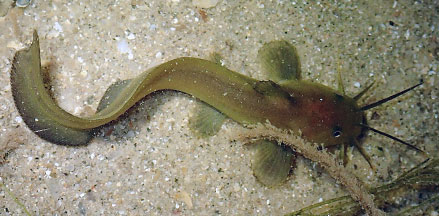
East Coast Park, Aug 19
Photo shared by Toh Chay Hoon on facebook. |
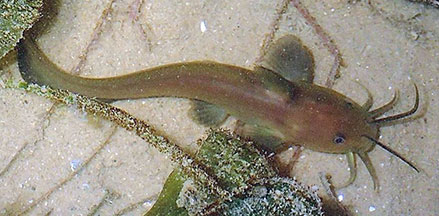
East Coast Park, Aug 20
Photo shared by Toh Chay Hoon on facebook. |
|
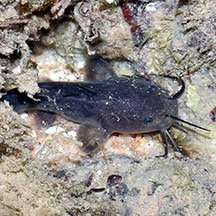
Labrador, Aug 17
Photo shared by Loh Kok Sheng on facebook. |
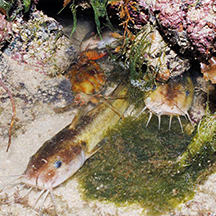
Seringat-Kias, Dec 14
Photo shared by Loh Kok Sheng on facebook. |
|
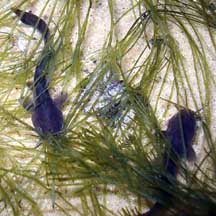
St. John's Island, Sep 09
Photo shared by Neo Mei Lin on her
blog. |
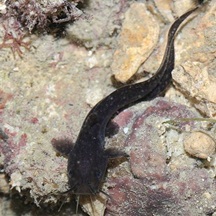
Sisters Island, Dec 10
Photo shared by James Koh on his
blog. |
|
|
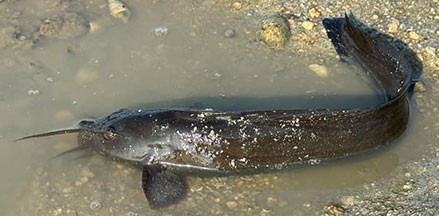
Terumbu Raya, Jul 25
Photo shared by Tammy Lim on facebook. |
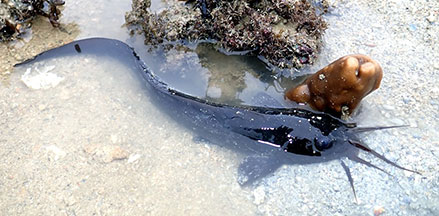
Beting Bemban Besar, Jun 19
Photo shared by Jianlin Liu on facebook.
|
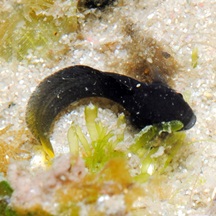
Cyrene Reef, Aug 11
Photo shared by Lok Kok Sheng on his
blog. |
|
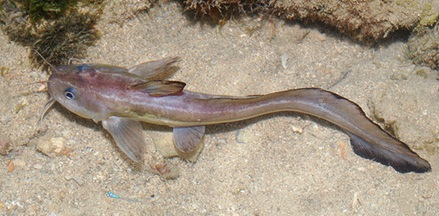
Terumbu Pempang Tengah, May 11
Photo shared by Loh Kok Sheng on his
blog. |
|
|
















